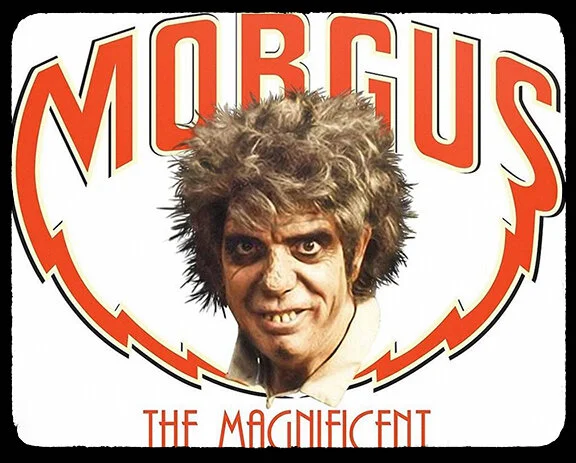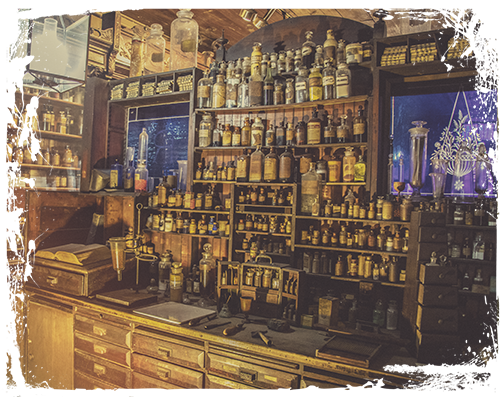The international holiday of 4/20 is upon us, and if you’re going to celebrate by ingesting The Devil’s Lettuce somewhere in the United States, you’ll want to raise an edible to New Orleans and its loooong history of helping establish marijuana culture in this country.
Sure, Texas usually gets credit for being the birth canal through which Wacky Tobacky entered the States. The most popular historical narrative is that Mexican refugees fleeing the violence of revolution brought smokable weed and cannabis seeds across the border around 1910. (Texans passed the earliest ordinance against the substance by 1914 not so much because they had a problem with marijuana, which caused considerably fewer problems for locals than the abundantly available combo of alcohol and cocaine, but because they, you know, had a problem with Mexicans.)
And while this narrative is factually correct, it leaves out cannabis had already introduced itself to the American South many years prior, right next door in Louisiana. It’s just that New Orleanians, as a thriving but scrappy international port, didn’t care nearly as much as Texans about what foreigners (or anyone else) put in their pipes and smoked.
So how did ganja get to New Orleans first? Human fuckery, mostly.
“SO….LIKE….WHAT IF WE GET THE SLAVES HIGH THO?”
Marijuana’s use as an intoxicant in North America is woven right into our country’s shameful slave-owning past. Indigenous to Asia, “narcotic marijuana” (aka the kind of “hemp” that gets you high vs. the kind ethical Etsy tote bags are made from) crossed from the Far East over a bridge of Portuguese and British slave traders, who used sativa to keep slaves submissive. The Brits and their unpaid servants imported from India brought it to the Caribbean while establishing plantations in Jamaica in the 1850s, where cannabis’ intoxicating—but ultimately super-soothing—effects reduced the likelihood enslaved individuals would get pissed and start murdering the masters:
“British authorities brought 1.5 million “surplus laborers” from India to labor-short islands in the Caribbean. Indentured Indian workers brought their ganja with them…and it was tolerated so long as sugar production did not suffer. Ganja’s use was closely wrapped up with that of rum, so that the two drugs became intertwined in the cycle of work and poverty that characterized [indentured] life on the sugar plantation,” writes Professor Barney Warf in his “An Historical Geography of Cannabis.”
But that wasn’t the first time Europeans used reefer as a psychedelic olive branch with the people they were subjugating.
In 16th century Brazil, Portuguese masters encouraged their slaves to plant marijuana IN the sugar cane fields they were tending. Giving slaves the “freedom” to plant and cultivate their own supply of their favorite medication gave the illusion of being benevolent masters while cunningly ensuring an oppressed majority was personally invested in the success of the sugar cane crops—some rogue slaves might have spitefully sabotaged the boss’s plants, but not if it meant their own cannabis crops would suffer.
Anyway, point is the Caribbean was flush with weed long before the Mexican Revolution, and boats loaded up with sailors from Jamaica and Antigua ported with regularity in New Orleans.
JAZZ VIPERS AND THE REEFER MAN
Because folks down South spent so much of the 1800’s trying not to die—war, plagues, poverty, and natural disasters were a preeeetty big part of the second half of that century—and because Caribbean sailors weren’t known for posting a lot of poetic stoner updates on Facebook at the time, cannabis doesn’t really start stepping into historical documents until the early 1900s, when Prohibition and the Jazz Age conspire to make Mary Jane one of the coolest kids in the Crescent City.
As Caribbean immigrants finally began to establish distinct footholds in NOLA, like Storyville, their herbal practices were passed first to other members of the black community, then to the poor white Bohemians unafraid to make music or mingle socially with people of color.
By the 1920s “Jazz Vipers”—local slang for musicians who got high, like Louis Armstrong—had become one of the signature archetypes of New Orleans, as synonymous with the city as curvaceous Storyville madams on porches or blushing Uptown debutantes in pearls. Brothels began to set aside parlor rooms specifically for jazz and smoking grass, as the combination of live music and weed gained the same popularity drinkin’ and whorin’ already enjoyed.
This, naturally, scandalized the more staid, deeply Christian residents of New Orleans, causing Prohibitionists to begin demanding a ban on marijuana. Desperate to drive young, not-yet-corrupted New Orleanians away from the influences of the Jazz Man and his friend, The Reefer Man, unintentionally hilarious propaganda about the “common effects” of weed started circulating widely.
“In many respects the action of cannabis sativa is similar to that of alcohol and morphine. Its toxic effects are ecstasy, merriment, uncontrollable laughter, self-satisfaction, bizarre ideas lacking in continuity, and its results are extreme hyperacidity with occasionally attacks of nausea and vomiting. It has also been described as producing, in moderate doses, from mild intoxication to a dead drunk, drowsy and semi-comatose condition, lapsing in a dreamy state with a rapid flow of ideas of a sexual nature, and ending in a deep sleep interrupted by dreams. On awakening there is a feeling of great dejection and prostration. Large doses produce excitement, delusions, hallucinations, rapid flow of ideas, a high state of ecstasy, psychomotor activity with a tendency to willful damage and violence, and a temporary amnesia of all that has transpired. In cases of prolonged addiction especially in the Malays, the somnolent action of cannabis indica is replaced with complete loss of judgment and of restraint, the same effect so frequently observed in alcoholic intoxication,” one especially heavy-handed excerpt from a propaganda piece titled THE MARIHUANA MENACE warned.
(PS: Science has since made clear sativa is NOTHING like alcohol or morphine, both of which can cause organ failure, overdose, and death.)
The Marihuana Menace was, unfortunately, presented to the Louisiana State Medical Society this week in history back in 1931, scaring the shit out of a lot of casual alcoholics with medical licenses and going on to become one of the most-cited pieces of literature during the “Reefer Madness” phase of American history.
We say “unfortunately” because while it was true that marijuana, like any intoxicant, could be and was sometimes abused, the paper was tainted with outright lies about what sativa and indica could do. Like this gem:
“Captain Dhunjibhoy says: "I shall not hesitate to believe any one who commits acts of violence under the influence of the drug and pleads complete amnesia of the crime on recovery…I put this drug above alcohol, opium and cocaine, with regards to injurious tendencies in the causation of insanity in India."
Or this one:
“Hemp is a direct cerebral poison which causes the following types of insanity: 1) acute delirious mania; 2) chronic mania; 3) dementia.”
Pretty damning stuff, if you leave out that
a.) Captain Dhunjibhoy ran an asylum, so the side effects of cannabis he witnessed were in people already suffering from severe mental illness, and
b.) The All-India Opium Act of 1878 made the gooey sister of heroin almost impossible for Indian civilians to obtain, so of course Dhunjibhoy experienced very few issues with it.
Technically speaking marijuana use in Louisiana became an illegal activity in the mid-1920s. And just as we did when Prohibition of alcohol hit, New Orleans rolled its eyes and turned back to the music with favorite vices in hand.
While the state as a whole is still hamstrung by some of the more Draconian laws about ganja in the nation, New Orleans continues to lead the charge in attempting to introduce common-sense weed legislation into the conversation. Most recently we decriminalized possession of the substance in sections of Orleans Parish, an effort to stop filling local jails with non-violent individuals guilty only of ‘bizarre ideas lacking in continuity.’

























